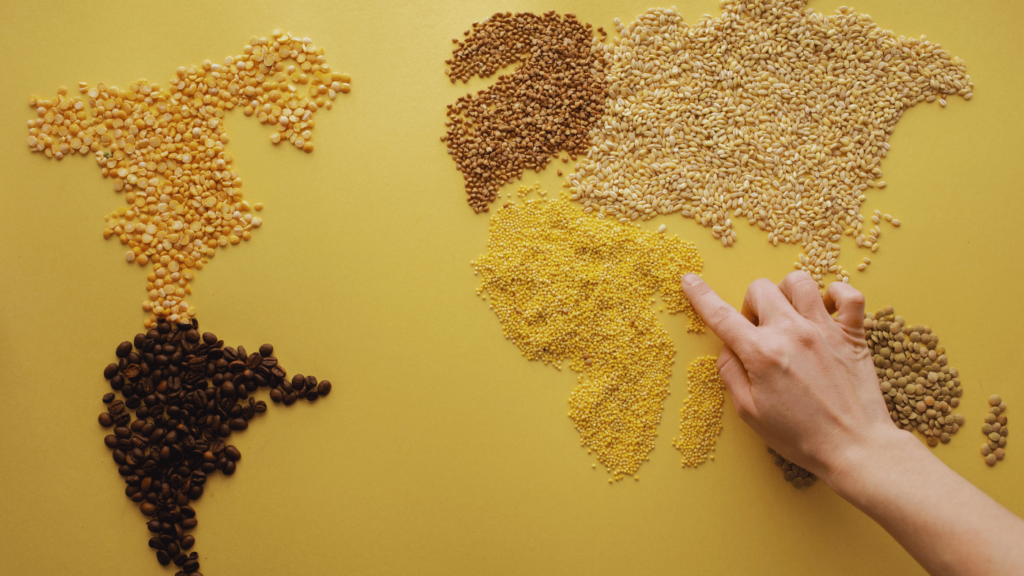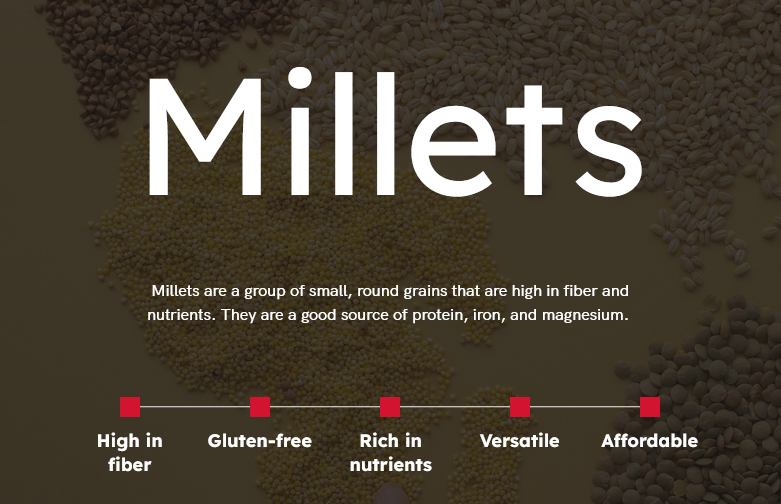In recent years, there has been a remarkable resurgence of interest in millets, ancient grains that are gaining popularity in modern diets. Once considered the staple food of our ancestors, millets are experiencing a revival owing to their exceptional nutritional value and positive environmental impact. As we delve into this comprehensive guide on different types of millets, it’s essential to understand why these grains are becoming a focal point in the quest for healthier and more sustainable eating habits.
Why are millets popular?
Millets have gained popularity due to their exceptional nutritional benefits. Packed with essential nutrients, including fiber, protein, vitamins, and minerals, millets contribute to a well-balanced diet. Additionally, their adaptability to diverse climates, eco-friendly cultivation, and gluten-free nature make millets an attractive choice for those seeking sustainable and healthy food options.
In this guide, we will explore the various types of millets, their nutritional nuances, and how they can be seamlessly integrated into modern culinary practices. Whether you’re a health enthusiast, a curious foodie, or someone keen on making sustainable choices, understanding the diverse world of millets is a journey worth embarking on. Join us as we uncover the secrets and benefits of these ancient grains, bringing them from the sidelines to the spotlight in our contemporary approach to a healthy and environmentally conscious lifestyle.
What Are Millets?
Definition of Millets:
Millets refer to a group of small-seeded grasses that have been cultivated for thousands of years as a staple food source across various cultures. These ancient grains belong to the Poaceae family and are characterized by their hardy nature, adaptability to diverse climates, and exceptional nutritional content. Millets are renowned for their versatility, making them an integral part of traditional diets in many parts of the world.

History and Origin of Millets:
Across different cultures, millets took on significant cultural and culinary importance. In India, for example, millets have been a dietary staple for centuries, featuring prominently in regional cuisines. In Africa, millets like sorghum have been a dietary cornerstone, providing sustenance to communities for generations.
Despite their historical significance, millets took a backseat to more common grains like rice and wheat. However, there’s a recent interest in millets for their sustainable and nutritious qualities. Exploring different types of millets helps us understand their rich history and why they’re making a comeback in today’s diets. From ancient origins to modern popularity, millets have played a vital role in human nutrition and agriculture.
As we explore the different types of millets in this guide, it’s important to appreciate the rich history and global legacy of these grains. From their ancient origins to their present-day resurgence, millets have played a vital role in shaping the course of human nutrition and agriculture. Understanding their history provides valuable insights into the cultural significance of millets and the reasons behind their renewed popularity in contemporary diets.
Also read, how to grown Millets at home.
Types of Millets
Key Nutrients in Millets:
- Fiber: Millets, across the board, are excellent sources of dietary fiber. This promotes digestive health, helps manage weight, and contributes to a feeling of fullness.
- Protein: Millets are notable for their protein content, making them valuable for vegetarians and vegans looking to meet their protein needs.
- Vitamins: Different millets provide various vitamins, including B-vitamins like niacin and folate, which are essential for energy metabolism.
- Minerals: Millets contain essential minerals such as iron, magnesium, phosphorus, and calcium, contributing to overall health and well-being.
Nutritional Profiles of Millets
Millets stand out not only for their cultural and historical significance but also for their exceptional nutritional content. Each type of millet offers a unique profile of nutrients, making them a valuable addition to a balanced and wholesome diet. Let’s delve into the nutritional nuances of various millets, comparing and contrasting their key components.
| Millet Type | Nutritional Highlights | Comparison |
|---|---|---|
| Finger Millet (Ragi) | – Rich in calcium, iron, and fiber. – Contains essential amino acids. | – Higher calcium content compared to other millets. – Exceptional for bone health and iron absorption. |
| Pearl Millet (Bajra) | – High in iron, magnesium, and fiber. – Good source of energy. | – Known for its energy-boosting properties. – Provides a substantial amount of magnesium for heart health. |
| Foxtail Millet (Thinai) | – Rich in protein, dietary fiber, and antioxidants. – Contains essential minerals like copper and iron. | – Higher protein content compared to other millets. – Aids in muscle development and overall cell function. |
| Sorghum (Jowar) | – High in dietary fiber, protein, and antioxidants. – Good source of vitamins B and minerals like phosphorus. | – High fiber content promotes digestive health. – Rich in antioxidants for cellular protection. |
| Proso Millet (Barri) | – High in protein, dietary fiber, and B-vitamins. – Contains essential minerals like phosphorus and iron. | – Protein content comparable to foxtail millet. – Provides a good mix of essential nutrients. |
| Little Millet (Kutki) | – Rich in B-vitamins, iron, and calcium. – High in fiber content. | – Calcium content supports bone health. – Fiber aids in digestion and satiety. |
Health Benefits of Millets
Incorporating millets into your regular diet can offer a plethora of health benefits, making these ancient grains a valuable addition to a well-balanced and nutritious lifestyle. Let’s delve into specific aspects of health and explore how regular consumption of millets can contribute to overall well-being.
1. Weight Management:
Millets are high in dietary fiber, which plays a crucial role in promoting satiety and controlling appetite. The slow digestion of fiber-rich foods helps in maintaining a feeling of fullness for an extended period, reducing the likelihood of overeating. Including millets in your diet can be beneficial for those aiming to manage their weight or embark on a weight-loss journey.
2. Digestive Health:
The abundant fiber content in millets supports digestive health by preventing constipation and promoting regular bowel movements. Fiber acts as a natural cleanser for the digestive system, aiding in the elimination of waste and toxins. This can contribute to a healthy and well-functioning digestive tract.
3. Heart Health:
Millets, particularly sorghum and pearl millet, have been associated with heart health benefits. These grains contain compounds that may contribute to lower cholesterol levels and a reduced risk of cardiovascular diseases. The fiber and antioxidants in millets play a protective role in maintaining a healthy heart.
4. Blood Sugar Regulation:
Millets have a low glycemic index, meaning they cause a slower rise in blood sugar levels compared to high-GI foods. This characteristic is especially beneficial for individuals with diabetes or those looking to manage blood sugar levels effectively. Including millets in meals can contribute to better glycemic control.
5. Bone Health:
Millets, such as finger millet and little millet, are rich sources of calcium and other minerals essential for bone health. Regular consumption can contribute to the maintenance of strong and healthy bones, reducing the risk of conditions like osteoporosis.
6. Nutrient Diversity:
Each type of millet brings its unique set of vitamins, minerals, and antioxidants to the table. Incorporating a variety of millets into your diet ensures a diverse range of nutrients, supporting overall health and providing a comprehensive nutritional profile.
7. Gluten-Free Option:
Millets are naturally gluten-free, making them an excellent choice for individuals with gluten sensitivities or celiac disease. They offer a safe and nutritious alternative to traditional grains that contain gluten.
Conclusion:
In conclusion, the health benefits associated with regular consumption of millets extend beyond mere sustenance. From weight management to heart health and bone strength, these grains have earned their place as nutritional powerhouses, contributing to a holistic approach to well-being. Whether you’re exploring a healthier diet or seeking alternatives for specific health concerns, embracing millets can be a flavorful and nutritious choice.





This information is magnificent. I understand and respect your clear-cut points. I am impressed with your writing style and how well you express your thoughts.
Good job on this article! I really like how you presented your facts and how you made it interesting and easy to understand. Thank you.
Really nice style and design and excellent content , nothing at all else we need : D.
Really nice style and design and excellent content , nothing at all else we need : D.